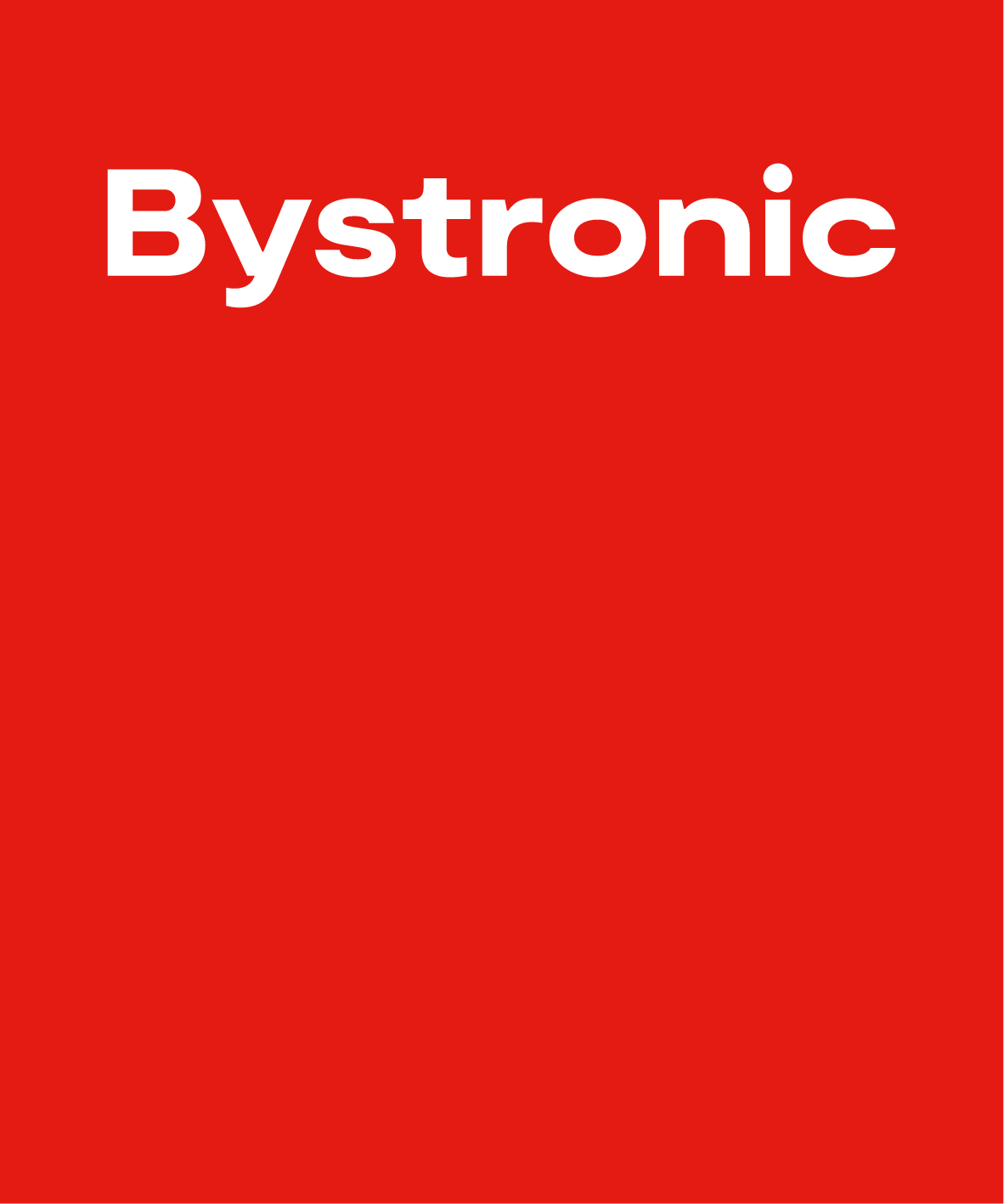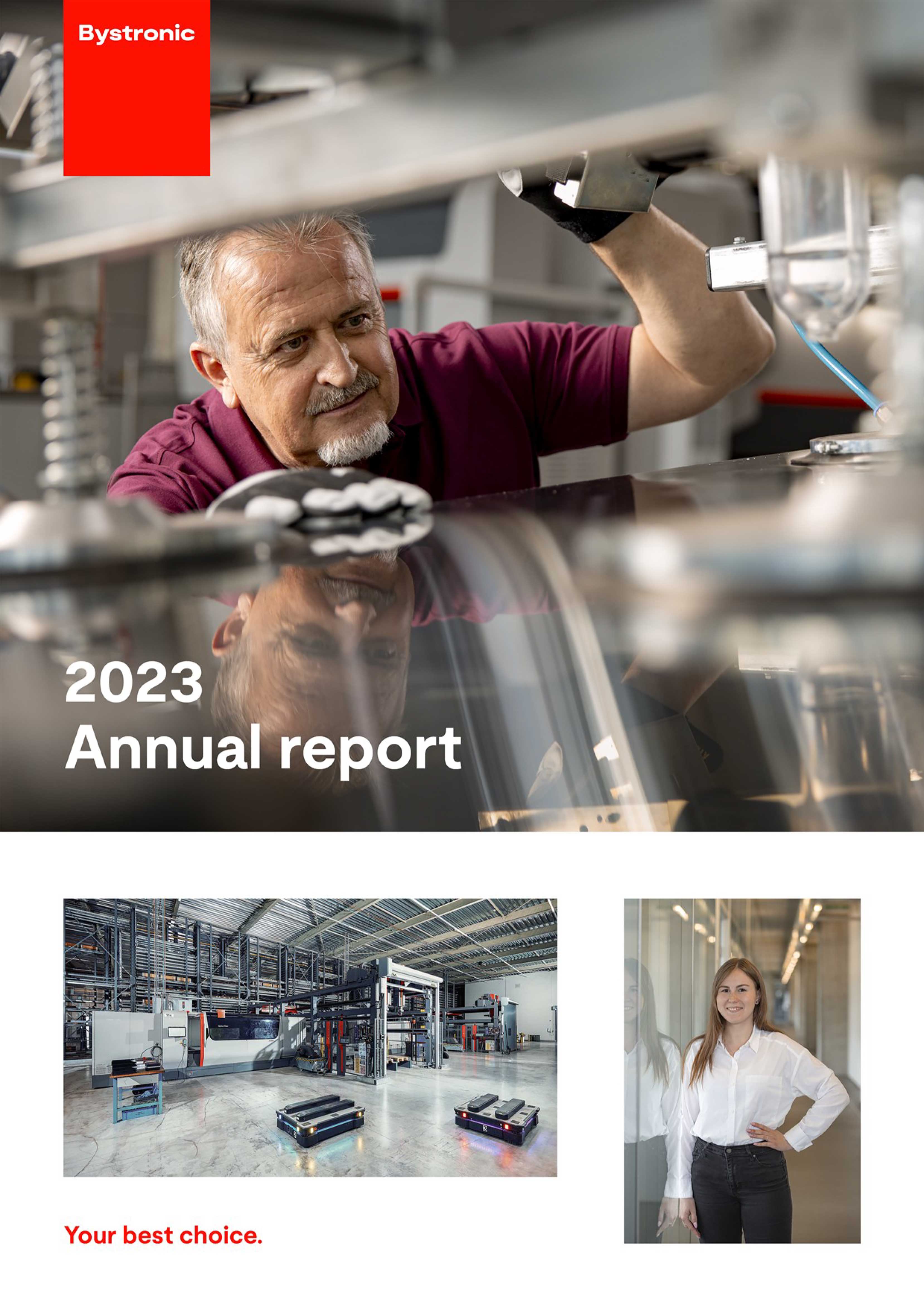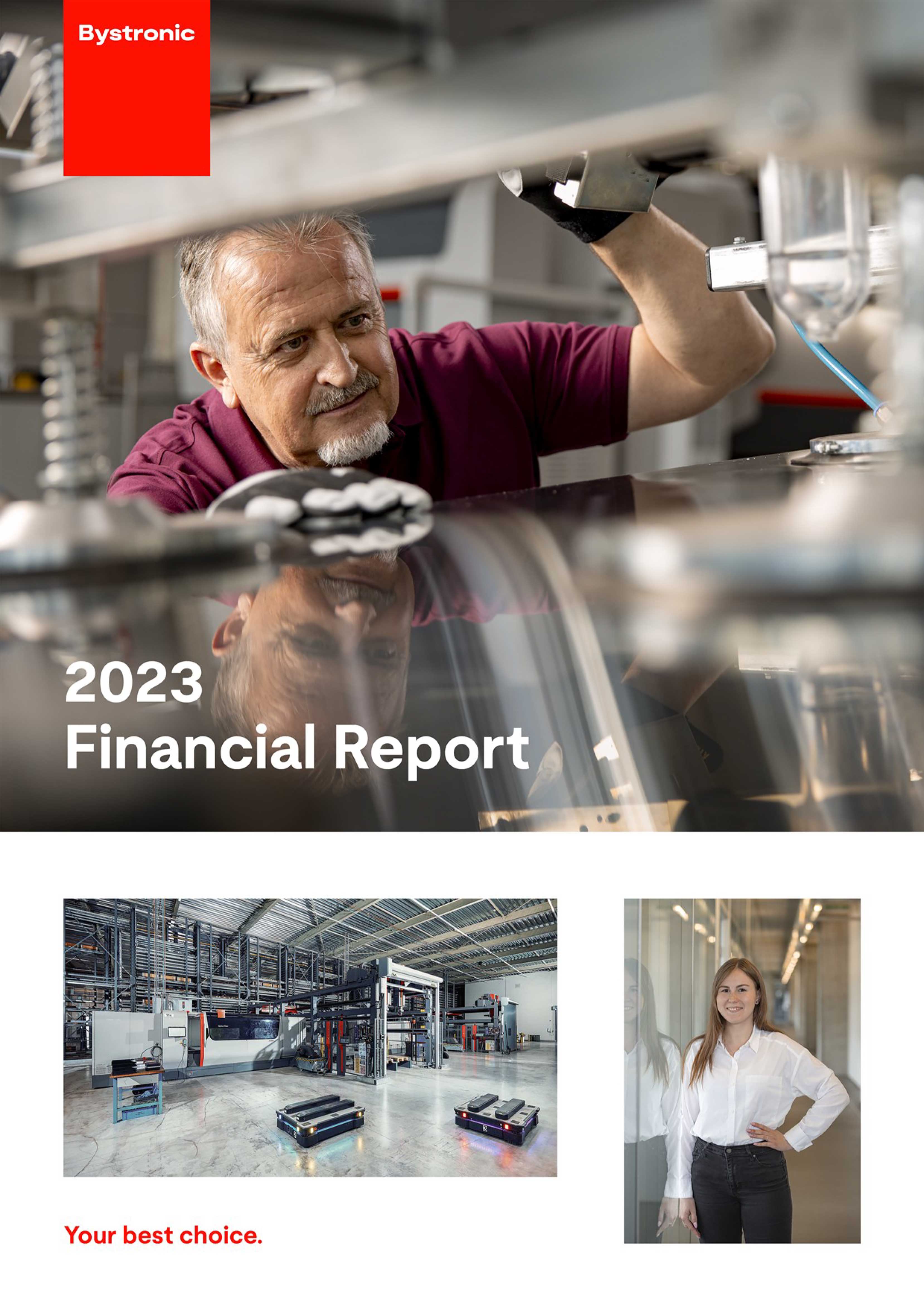1 Performance
1.1 Segment information: order intake/net sales
Order intake1
Order intake is an important performance indicator. An order is recognized when a sales contract is signed, an initial down payment received and the customer's product orders placed at the production plants.
|
CHF million |
2023 |
|
2022 |
|
|
|
|
|
|
|
|
EMEA |
368.5 |
|
508.8 |
|
|
Americas |
290.3 |
|
308.7 |
|
|
China |
65.4 |
|
77.4 |
|
|
APAC |
69.8 |
|
114.7 |
|
|
Order intake |
794.0 |
|
1,009.5 |
|
|
|
|
|
|
|
1 Order intake was not subject to the audit.
Net sales
|
CHF million January – December 2023 |
Net sales third parties |
|
Net sales interregion |
|
Total net sales |
|
|
|
|
|
|
|
|
|
|
EMEA |
453.3 |
|
181.8 |
|
635.1 |
|
|
Americas |
335.1 |
|
3.6 |
|
338.7 |
|
|
China |
63.5 |
|
41.9 |
|
105.4 |
|
|
APAC |
78.2 |
|
3.8 |
|
82.0 |
|
|
Eliminations |
|
|
–231.1 |
|
–231.1 |
|
|
Net sales |
930.1 |
|
|
|
930.1 |
|
|
|
|
|
|
|
|
|
|
CHF million January – December 2022 |
Net sales third parties |
|
Net sales interregion |
|
Total net sales |
|
|
|
|
|
|
|
|
|
|
EMEA |
500.1 |
|
222.1 |
|
722.2 |
|
|
Americas |
315.9 |
|
4.5 |
|
320.4 |
|
|
China |
83.3 |
|
77.0 |
|
160.3 |
|
|
APAC |
116.5 |
|
3.6 |
|
120.1 |
|
|
Eliminations |
|
|
–307.1 |
|
–307.1 |
|
|
Total |
1,015.9 |
|
|
|
1,015.9 |
|
|
|
|
|
|
|
|
|
With reference to the recommendation for listed companies (FER 31/8), Bystronic refrains from disclosing segment results in the interest of the shareholders for the following reasons:
- Impairment of negotiating positions:
The disclosure of segment results would allow conclusions to be drawn about pricing, which could significantly affect Bystronic’s negotiating position. - Competitive disadvantage compared to competitors:
Bystronic’s competitors do not disclose segment information and detailed segment results. Thus, the disclosure of segment results would put Bystronic at a competitive disadvantage compared to its competitors as the results allow conclusions to be drawn about the margin and cost situation per segment.
Accounting principles
External segment reporting is based on the internal reporting used by the Executive Committee and the Board of Directors for corporate management purposes. There are four regional segments at Bystronic: EMEA, Americas, China and APAC.
Machine sales are recognized when the risks and rewards of ownership have been transferred to the buyer. Hence, revenue is recognized upon completion of the installation and when the machine is ready for operation. This is generally recorded in an acceptance protocol. The revenue is recognized separately for transactions with separable components. Services rendered are recognized as revenue based on their stage of completion if this can be reliably estimated. Net sales correspond to the expected value of the services provided, net of sales and value-added taxes, sales deductions such as sales bonuses, rebates and discounts granted as well as value adjustments and currency effects on trade receivables.
1.2 Backlog1
The backlog at the end of the period equals the backlog at the end of the previous period, adjusted for foreign currency effects, plus the order intake of the reporting period minus net sales of the reporting period.
|
CHF million |
12/31/2023 |
|
12/31/2022 |
|
|
|
|
|
|
|
|
Backlog |
252.9 |
|
413.0 |
|
|
|
|
|
|
|
1 Backlog was not subject to the audit.
1.3 Other operating income
Other operating income includes proceeds from the sale of fixed assets and obsolete materials and income from subsidies and insurance payments.
1.4 Operating expenses
Material expenses
Material expenses include all expenses for raw, auxiliary and operating materials as well as expenses for the external manufacture, processing or treatment of own products (external services).
Compared to the decrease in net sales of 8.4%, material expenses dropped disproportionately by 13.7%, taking into account the changes in inventories of unfinished and finished goods. The ratio of the adjusted material expenses to net sales (materials ratio) amounted to 43.5%, 2.7 percentage points lower than in the previous year. The lower materials ratio compared to the previous year is due on one hand to a higher share of sales from the service business and on the other hand to savings in procurement and sales price increases.
Personnel expenses
|
CHF million |
2023 |
|
2022 |
|
|
|
|
|
|
|
|
Wages and salaries |
202.2 |
|
210.2 |
|
|
Social security benefits |
43.5 |
|
42.4 |
|
|
Other personnel expenses |
6.2 |
|
7.3 |
|
|
Total personnel expenses |
251.9 |
|
260.0 |
|
|
Average number of full-time equivalents |
3,573 |
|
3,679 |
|
|
|
|
|
|
|
Bystronic’s personnel expenses decreased by 3.1% compared to the previous year. In relation to sales, personnel expenses increased by 1.5 percentage points to 27.1%.
Some Bystronic companies received short-time working compensation or similar personnel-related state subsidies. These were credited to personnel expenses and amounted to CHF 0.3 million (previous year: CHF 0.1 million).
The average number of employees sank by 2.9% to 3,573 full-time equivalents. The decrease was seen in particular production as a result of an economy-related decline in demand.
Other operating expenses
|
CHF million |
2023 |
|
2022 |
|
|
|
|
|
|
|
|
Direct costs of sold products |
81.5 |
|
88.7 |
|
|
Purchased services 1 |
49.2 |
|
49.3 |
|
|
Maintenance, rent, leasing and energy |
30.2 |
|
30.1 |
|
|
Sales, marketing and administration |
28.5 |
|
36.4 |
|
|
Sundry operating expenses |
13.6 |
|
17.5 |
|
|
Total other operating expenses |
203.1 |
|
222.1 |
|
|
|
|
|
|
|
1 Purchased services include consulting and audit, IT, research and development and insurances, among others.
Compared to the previous year, other operating expenses of Bystronic decreased by 8.6%. Both the direct costs of goods sold and the costs of purchased services and for exhibitions dropped. In relation to net sales, other operating expenses decreased by 0.2 percentage points to 21.8%.
1.5 Income taxes
|
CHF million |
2023 |
|
2022 |
|
|
|
|
|
|
|
|
Current income taxes |
14.8 |
|
13.2 |
|
|
Deferred taxes |
–1.7 |
|
–4.3 |
|
|
Total income taxes |
13.1 |
|
8.9 |
|
|
|
|
|
|
|
Current income taxes include taxes paid and still owed on the taxable income of the individual companies.
|
|
Tax rate 2023 |
|
Income taxes 2023 |
|
Tax rate 2022 |
|
Income taxes 2022 |
|
|
|
|
|
|
|
|
|
|
|
|
Average applicable tax rate and income taxes |
22.2% |
|
12.2 |
|
20.0% |
|
9.1 |
|
|
Effect of non-recognition of tax losses in current year |
2.8% |
|
1.6 |
|
1.4% |
|
0.7 |
|
|
Use of unrecognized tax loss carryforwards |
–0.2% |
|
–0.1 |
|
–1.2% |
|
–0.6 |
|
|
Reassessment of tax loss carryforwards |
0.8% |
|
0.5 |
|
–1.1% |
|
–0.5 |
|
|
Other influences |
–1.9% |
|
–1.1 |
|
0.5% |
|
0.2 |
|
|
Effective tax rate and income taxes |
23.8% |
|
13.1 |
|
19.5% |
|
8.9 |
|
|
|
|
|
|
|
|
|
|
|
The expected tax rate for Bystronic of 22.2% (previous year: 20.0%) corresponds to the weighted average of tax rates in the respective tax jurisdictions. The effective tax rate is 23.8% (previous year: 19.5%) on the ordinary income before taxes. The increase from the average applicable tax rate to the effective tax rate is mainly due to the non-recognition of tax losses in the current year.
Bystronic calculates deferred taxes at the tax rates actually expected to apply to the temporary differences in the individual companies. This was weighted on average 19.8% (previous year: 18.0%). Deferred tax assets from loss carryforwards amounted to CHF 4.0 million (previous year: CHF 3.3 million).
Loss carryforwards of CHF 28.6 million (previous year: CHF 22.5 million) were not capitalized.
Significant estimates made by management
Significant estimates have to be made to determine the amount of current and deferred income tax assets and liabilities. Some of these estimates are based on the interpretation of existing tax legislation and regulations. Various internal and external factors may have favorable or unfavorable effects on income tax assets and liabilities. These factors include, but are not limited to, changes in tax legislation and regulations and their interpretation, changes in tax rates and in the overall level of earnings before taxes. Such changes may impact the current and deferred income tax assets and liabilities recognized in future reporting periods.
Accounting principles
Income taxes include current and deferred income taxes. All tax liabilities are accrued, irrespective of their maturity. The expected taxes on the valuation differences between the group’s carrying amounts and the tax bases are accrued at the expected income tax rates for the companies. The change in these deferred taxes is recognized through tax expenses. The deferred tax assets from offsetting loss carryforwards and temporary valuation differences are only capitalized if it is highly probable that future taxes on profits can be offset.
Bystronic is within the scope of the OECD BEPS 2.0 Pillar Two Model Rules. Due to the complexity in applying the legislation and calculating the GloBE ETR (effective tax rate according to GloBE), the quantitative impact of the legislation enacted or entered into force cannot yet be conclusively assessed. As numerous countries have postponed the enactment and the effects of the provision cannot yet be conclusively assessed, no adjustment has been made to deferred taxes. However, as the legislation had not yet come into force at the reporting date, there was no impact on current income taxes in the reporting year. It is likely that the safe harbour rules will apply for the majority of cases in the future. Despite of this, there could be tax implications even for companies with an effective tax rate of over 15%. Bystronic is monitoring further developments and is currently working with tax specialists to assist with the analysis of the impact.
1.6 Earnings per share
|
CHF |
2023 |
|
2022 |
|
|
|
|
|
|
|
|
Net result attributable to shareholders of Bystronic AG |
41,947,000 |
|
36,584,000 |
|
|
Average number of class A registered shares (nominal value: CHF 2.00) |
1,825,567 |
|
1,825,040 |
|
|
Average number of class B registered shares (nominal value: CHF 0.40) |
1,215,000 |
|
1,215,000 |
|
|
Earnings per class A registered share in CHF (diluted/basic) |
20.28 |
|
17.69 |
|
|
Earnings per class B registered share in CHF (diluted/basic) |
4.06 |
|
3.54 |
|
|
|
|
|
|
|
Share-based payments do not lead to a dilution of earnings per share.
Accounting principles
Earnings per share category were calculated on the basis of the portion of net income attributable to the shareholders of Bystronic AG, based on their portion of the share capital and the average number of outstanding shares (issued shares less treasury shares).


